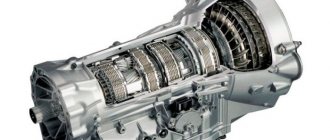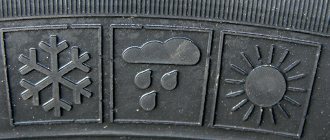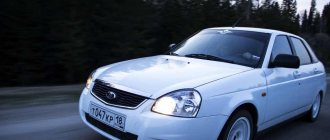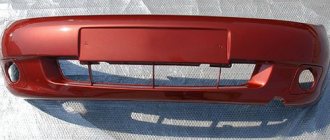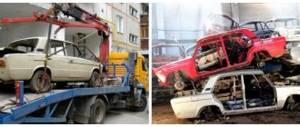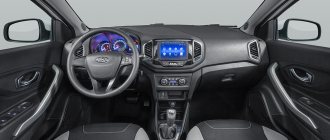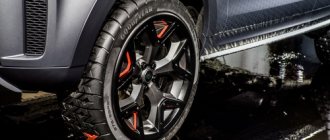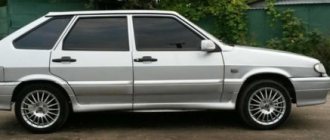There are several types of car bodies - today, the most common types on the market are sedan, station wagon, pickup truck, hatchback, crossover, coupe and SUV. Limousines and convertibles are less common in the Russian Federation. There are quite a few differences between them all.
But it can be difficult for an inexperienced motorist to understand exactly how a sedan differs from a hatchback and whether it is so important to know these differences in 2020. In fact, everything is not so complicated, and you can distinguish one from the other by external signs and design features inherent only to one or another model, but you need to know the difference to successfully choose a car.
Before evaluating the advantages and disadvantages of both body types, it is necessary to know the characteristics of each of them. Features of the sedan:
- passenger vehicle;
- divided interior and trunk compartment;
- the cargo compartment lid is called the rear hood;
- does not have a lifting door in the rear wall of the body;
- two- or four-door design;
- the car is practical and comfortable;
- has a presentable appearance.
Description of a car with a hatchback body (or hatchback):
- one-piece volumetric body, which has no distinction between the interior and the luggage compartment;
- the cabin has 1-2 rows of seats;
- the rear overhang is shortened, and there is a door on the rear wall of the body;
- The front overhang of a hatchback is always longer than the rear;
- the liftback is similar to the body of a classic car, but the rear window is combined with the luggage compartment;
- three- or five-door body;
- the trunk is part of the cabin and is located behind the last row of passenger seats;
- a row of rear seats folds down, which increases the volume of the luggage compartment;
- the body is shorter compared to a sedan or station wagon;
- The trunk lid is considered the door of the car.
Hatchback
The main features of a passenger car called a hatchback are related to the design of its rear part. The presence of a rear door, a short overhang, a trunk combined with the interior—this is what distinguishes the model from other types of cars and attracts attention.
What are the advantages of such a design solution? Cars of this type are able to maneuver better in urban environments due to their reduced length and front-wheel drive. At the same time, their sufficient capacity allows you to enjoy your trip comfortably.
Reference! Hatchbacks with three and five doors are available. For a family car, it is better to choose the second version of the car.
Some consider the disadvantage of this type of design to be the small volume of the trunk and the fact that it is combined with the interior. The latter feature contributes to the penetration of unpleasant odors into the cabin when products with a specific odor are regularly transported in the luggage compartment.
Engine and gearbox
First, let's decide on the power unit.
Vesta is equipped with gasoline engines with a displacement of 1.6 and 1.8 liters, with a power of 106 and 122 hp. With. respectively. Each of them can be combined with a robot (+25,000 rubles), from which you immediately want to dissuade: this is far from the most advanced unit with one clutch, the driving performance of the car. When changing gears, it makes the car jerk, while the shift moments themselves are not always predictable. In general, if you need a car with an automatic transmission, then the robotic Vesta is not the best option. Which motor should you prefer? An additional payment of 35 thousand for a more powerful engine looks quite moderate. And yet, it makes sense to stay with the basic version 1.6 (106 horsepower): it copes quite successfully even with a loaded car, without sagging much during acceleration. As for the 1.8-liter engine, it has not yet overcome childhood illnesses: there are still many complaints about its performance.
Station wagon
This type of car, called a station wagon, is distinguished by its large dimensions and increased capacity. The car is equipped with a door in the rear, which is the trunk lid combined with the passenger compartment.
Due to its capacity, this type of car is in demand among large families. But its dimensions make it less maneuverable in city traffic. In addition, station wagons are well suited for cargo transportation - you can further increase the trunk volume by folding the rear row of seats.
Models of this design also have a significant drawback. In the event of an accident, luggage often flies into the cabin, which causes increased injuries to passengers.
Reference! To prevent force majeure situations in many countries, it is mandatory to install a special mesh separating the trunk and passenger compartment space in a station wagon.
What is the difference between a sedan, hatchback and station wagon?
A station wagon is a cross between a hatchback and a sedan. As a rule, the length of the second and the station wagon are almost the same. Station wagons rarely come with three doors; car companies mostly produce 5-door models. Sometimes car designers design a sloping roof, but a classic station wagon body is when the roof of the car is almost as long as the end of the car. The fifth door or trunk lid rises up or opens to the side.
On a note!
There are station wagon models that have a 2-leaf tailgate.
The luggage compartment is large due to the long, flat roof. It can be further increased by folding the rear row of seats. The interior has comfortable seats, like in a sedan, but a spacious interior, like in a hatchback. The width of the car is the same as a classic car, so the whole family can comfortably fit inside the cabin. The station wagon has a stiffer suspension compared to the sedan.
When transporting long cargo, a station wagon is always at its best, because other models cannot accommodate such luggage.
On the road, it is impossible to confuse a station wagon with a hatchback - the station wagon is longer and the trunk roof does not have a sloping rear overhang.
You can also distinguish a station wagon by the rear pillars in the car - in it they are longer and located vertically to the frame of the car, and the long side windows on the trunk, which end on its pillars, also stand out.
Station wagons are preferable for people who often travel with their whole family by car - passengers are comfortably accommodated in the cabin, and all their belongings are in the trunk. For example, a crossover cannot boast of such amenities - it is a more urban car.
Most recently, the price for the next version of Vesta was announced - . It’s a good car, but the road is not in the domestic style: from 763,900 rubles. for a car with a 1.6-liter engine and manual transmission. True, the “crossover” station wagon is even more expensive - 795,900 rubles. and higher. The reason for such respectable prices lies in the configuration: “crosses” are sold in at least the Luxe version. However, does the average car enthusiast need all these untold riches that this version abounds in?
Let’s make a reservation right away: if you are initially determined to acquire the latest new product from your native automobile industry, then we will not dissuade you, since both Crosses (both the sedan and) turned out to be really attractive. And yet, it seems to us, Vesta is good in her moderation. Therefore, it makes sense to be tempted by simpler versions, since in terms of consumer qualities they are almost not inferior to top models. The ground clearance of a regular SW sedan and station wagon, although less than the “cross” one (178 versus 203 mm), is still more than enough for a passenger car. And the wheels are an inch or two more modest - you can save money on winter tires.
What is the difference between a hatchback and a station wagon?
Despite the similarities, there are differences between the cars in question.
The compactness of the hatchback and some other design features - for example, the inclined position of the rear door - give the car an elegant appearance. For many, the more aesthetic appearance of a car compared to a station wagon is a decisive factor when purchasing. In addition, the small dimensions of the model contribute to its greater maneuverability.
Sedan, hatchback or station wagon: what should a city dweller choose?
The car must be comfortable, practical and presentable. However, for this reason, it is not at all necessary to buy 3 different cars, because modern cars in most cases meet all the listed parameters. But despite this, the debate about which body is better: sedan, hatchback or station wagon still continues. Let's try to figure it out!
So, in order to understand which car body is preferable for a city dweller, you need to decide what each of them is. A sedan is a closed body type of passenger car. The design feature is that the trunk is structurally separated from the car interior. Prominent representatives of the sedan family are Hyundai Solaris, Kia Rio, Lada Granta and others.
Advantages and disadvantages of sedans:
- attractive appearance;
- the suspension is somewhat softer when compared with hatchbacks and station wagons, which is explained by the peculiarities of the vehicle’s weight distribution along the axles;
- the rear window, in comparison with cars in other body styles, collects much less dust; – trunks are not very large. There is hardly any room for large cargo in the cabin either.
Hatchbacks confidently occupy second position in popularity among Russian motorists, breathing in the bumper of sedans. A distinctive feature of this type of body is the trunk, which is made in the form of a door with glass that opens upward together, which allows, if necessary, to load larger items. The trunk is an integral part of the cabin. In addition, the hatchback is characterized by a shortened rear overhang. Among the cars found on the roads with a similar body design are Daewoo Matiz, Volkswagen Golf , and BMW of the first series.
Advantages and disadvantages of hatchbacks:
- spacious trunk and convertible rear seats;
- small dimensions, which in conditions of a terrible shortage of parking spaces is simply priceless; – when transporting smelly cargo in the trunk, its smell will penetrate into the cabin. In addition, you will have to constantly listen to noise coming from glass and/or iron objects located in the trunk; – in winter, it takes longer to warm up the car interior compared to sedans. In summer, the air conditioning system will also have to work harder.
Station wagons are similar in appearance to hatchbacks. However, the trunk in cars with a similar body design is somewhat larger. The roof of the station wagon has been extended to the rear area. This body type also differs from a hatchback in the length of the rear overhang; in station wagons it is longer. The main advantage of station wagons is the ability to transport large cargo. The disadvantages of cars in this body style are similar to those that we listed when we talked about hatchbacks.
Which body is preferable for a city dweller is up to you to decide based on your needs. So, if you do not need to transport large cargo, then do not sacrifice comfort and buy sedans. If you periodically have to transport luggage or you have a small child and need to transport a stroller, then it would be wiser to purchase a hatchback. Well, if your car often functions as a mini-truck for transporting cargo, then choose a station wagon.
Difference between hatchback and station wagon
When choosing a car, a person is guided by many factors, including the cost of the vehicle, the make, model of the car, and, of course, the body type. The last factor is almost decisive, because comfort and the possibility of proper operation of the car directly depend on it. Hatchback and station wagon are widely popular among drivers all over the world, and the difference between the two body types is what determines the motorist’s choice in favor of one option or another.
- Hatchback
- Station wagon
- Comparison
- Conclusions TheDifference.ru
Hatchback
The car body may have one or two rows of seats, depending on the configuration. A distinctive feature of this body type is the presence of a door in the rear wall and, most importantly, a shortened rear overhang. The last factor makes it easy to distinguish a hatchback by its appearance. As a result, the car's trunk is not as spacious as, say, a station wagon. But this design allows the hatchback to maneuver well in urban environments, which is why this body type is widely in demand in metropolitan areas. Another advantage is the possibility of easy parking. The actual combination of the passenger compartment and trunk also has a negative side: quite often, drivers and passengers complain about an unpleasant smell from the trunk if, for example, some products are transported there.
Toyota Prius NHW20 - hatchback example
What is called a sedan and hatchback?
Before evaluating the advantages and disadvantages of both body types, it is necessary to know the characteristics of each of them. Features of the sedan:
- passenger vehicle;
- divided interior and trunk compartment;
- the cargo compartment lid is called the rear hood;
- does not have a lifting door in the rear wall of the body;
- two- or four-door design;
- the car is practical and comfortable;
- has a presentable appearance.
Description of a car with a hatchback body (or hatchback):
- one-piece volumetric body, which has no distinction between the interior and the luggage compartment;
- the cabin has 1-2 rows of seats;
- the rear overhang is shortened, and there is a door on the rear wall of the body;
- The front overhang of a hatchback is always longer than the rear;
- the liftback is similar to the body of a classic car, but the rear window is combined with the luggage compartment;
- three- or five-door body;
- the trunk is part of the cabin and is located behind the last row of passenger seats;
- a row of rear seats folds down, which increases the volume of the luggage compartment;
- the body is shorter compared to a sedan or station wagon;
- The trunk lid is considered the door of the car.
Station wagon
This is a closed two-volume body for passenger and cargo transportation. We can say that a station wagon is a sedan with an enlarged luggage compartment and an additional lift door at the rear. As a result, the vast majority of station wagons have five doors, less often - three. Since the luggage compartment and passenger compartment are combined, this creates a risk of injury to passengers due to the cargo being transported (for example, due to an accident). Therefore, in many countries around the world they use a special dividing net to properly protect passengers from force majeure situations.
Opel Astra H - an example of a station wagon
Body types
Let's look at the most common body types:
- A sedan
is a car body with a trunk separated from the passenger compartment by seats. This type is also called three-volume: the interior and trunk are two closed adjacent spaces (the third is the engine compartment). The trunk lid is called the hood. The rear window is comparable in installation angle and area to the windshield. Most car models have 4 doors and 2 rows of seats. - A hatchback
is a body with a shortened rear overhang, that is, the distance from the rear wheel to the rear bumper. The body is two-volume - the trunk is part of the cabin and is located behind the passenger seats. To hide the contents of the trunk and protect passengers, the manufacturer provides a stretchable fabric mesh. There is a lift-up door in the rear wall that provides access to the interior. The vast majority of modern hatchbacks have a sloping door. Models are available with both 3 and 5 doors. - A station wagon is
a passenger car with 5 doors and a luggage compartment combined with a passenger compartment. Features a large trunk volume. The fifth rear door can be lifting, opening to the side, or double-leaf. It is possible to install an additional row of passenger seats in the cabin. The sedan and station wagon have the same body length.
Comparison
The combination of luggage compartment and interior is the most striking example of the similarities between hatchback and station wagon. What is the difference between a hatchback and a station wagon? In the following:
- The size of the luggage compartment of a hatchback is smaller; accordingly, this type of body is less often used for cargo transportation. But the station wagon is specifically purchased by many companies as a vehicle for cargo transportation.
- The hatchback has a more elegant design (rear part of the body). The inclined door looks more beautiful than the strict vertical version of the station wagon. For example, many women prefer hatchbacks because of their aesthetic appearance.
- The station wagon is longer. It is difficult to say whether this is an advantage or a disadvantage - it all depends on the purpose for which the car is used. If for freight, then it is rather an advantage; if for a regular trip and transportation of passengers, then it is closer to a disadvantage.
- The driving comfort of a station wagon and a hatchback is almost the same, except that in some station wagons tall passengers in the rear seats feel more comfortable.
- As a rule, a station wagon costs more. For example, the station wagon body type of new Lada Priora or Kia pro cee'd cars costs more than a hatchback.
Sedan
Now let's move on to choosing a configuration - and start with the sedan. attracts with its price (only 584,900 rubles), and the set of equipment looks quite convincing: there is an electronic stabilization system, front airbags, heated exterior mirrors and seats, front electric windows, central locking with remote control and an on-board computer. The only thing missing is air conditioning and music. But the problem with the air conditioner can be easily solved by paying an additional 25 thousand for the next Classic Start package, and you can plug in any radio, fortunately audio preparation is provided. In principle, such a sedan will be reasonably sufficient.
The next version of Comfort (637,900) adds mirrors in the sun visors, a case for glasses, rear parking sensors, cruise control, as well as a height-adjustable driver's seat and an audio system with USB and Bluetooth, coupled with a multifunction steering wheel - so for 28 thousand. rubles is a very good offer. But paying another 23 thousand for Comfort Image (rear electric windows, heated windshield and 16-inch light alloy wheels) is no longer necessary. The top versions Luxe and Luxe Multimedia are good mainly for the presence of side airbags. Plus there are a number of not very useful options. At the same time, such top versions already cost over 700 thousand rubles. A little expensive!
Hatchback: an urban compromise
A hatchback is a variation of a passenger car with a short overhang, a rear “hatch” door and a small luggage compartment combined with the interior. Depending on the specific configuration, the car may have 1 (less often) or 2 rows of seats, 3 or 5 doors. The luggage compartment can be significantly increased by simply folding the rear seats.
What does a hatchback look like?
The appearance of hatchbacks was the result of the growing demand for a city car, behind the wheel of which the driver would feel comfortable in dense city traffic during rush hour. The border of the body runs along the edge of the rear wheels. The layout in most cases involves front-wheel drive with a transversely mounted engine. These solutions can significantly increase the vehicle’s maneuverability and make parking possible in difficult conditions.
A beginner who has just graduated from driving school will feel more confident in a hatchback, since the dimensions of the body are much better felt on it.
Let us once again pay attention to the characteristic distinctive features:
- Shortened rear overhang - thanks to this feature, the hatchback can be easily distinguished from other modifications in appearance;
- The trunk volume is less spacious than in station wagons or other variations;
- There is a door in the back wall. In some cases, the glass in it can open separately.
Due to the fact that the interior is actually combined with trunks, passengers may complain about an unpleasant odor emanating from the trunk if specific foods, motor oils, etc. are regularly transported there.
What is a hatchback?
Good afternoon, dear readers.
As many of you have probably already guessed, today I want to talk about the types of car bodies. I remember times when hearing the word hatchback caused me bewilderment. I think that among the readers there will be people with a similar problem. In this article I will try to solve this problem.
In order not to mislead you, let me clarify that the picture on the left does not show a hatchback, but a dump truck. Yes, you probably guessed it yourself.
Now let’s take a closer look at the bodies of passenger cars. The most common and popular body styles include: sedan, hatchback and station wagon. There are other types of bodies, such as coupe, convertible, limousine, and carriage. They are less popular today.
Sedan
This type of body is distinguished by a classic trunk. And the body itself is classic. Just 15-20 years ago, most cars were produced with a sedan body type.
The sedan has a relatively small trunk capacity (compared to the hatchback and station wagon) and usually has 4 doors.
Hatchback
This body type is more modern than classic. In my opinion, now hatchback cars are gradually replacing classic sedans. And there is a reason for this. While the hatchback is generally shorter in length (the hatchback has a shorter rear overhang) than the sedan, the former has significantly more capacity.
The hatchback in different versions can have 3 or 5 doors. A 3-door hatchback is not a gift for a large family. In a car like this, sitting in the back seat is not fun.
Station wagon
Cars with this body type have increased capacity. Just like the hatchback station wagon, it has 5 doors. But the length of the station wagon is much longer. Typically, the rear door of a station wagon is located almost perpendicular to the ground. The rear seats of the station wagon can be folded and this allows you to significantly increase the luggage compartment (you can carry a small bull).
The station wagon, thanks to its capacity, is ideally suited for a large family. But the dimensions of such a car can cause inconvenience when driving in city traffic.
I wanted to finish the article, but I remembered another very common body type. Of course it's a jeep.
Crossover (SUV)
Crossovers (or jeeps) are cross-country vehicles. They are larger than other passenger cars and are more comfortable to drive. Crossovers may have a trunk or a fifth door, i.e. There are jeep station wagon, jeep hatchback and jeep sedan.
Today, a crossover is a fairly common phenomenon and is used not only for off-road driving, but also for comfortable spending time in city traffic jams.
Each driver chooses the body type according to his own needs. Historically, sedan cars have been the most popular in Russia, but over the past few years they have been gradually replaced by crossovers.
What type of car body do you prefer?
Station wagon: I take everything I own with me!
The station wagon is a five-door passenger car based on a sedan of the same model, in which 4 doors are located on the sides in pairs, and one in the rear of the body. The latter is located vertically and is the lid of the luggage compartment, which communicates with the interior of the car.
What does a station wagon look like?
If necessary, the luggage compartment volume can be increased by folding the rear row of seats (the same as in the hatchback we discussed above).
Of all types of passenger cars, station wagons are best suited for cargo transportation, which is why they have been consistently popular for many years among people working with large luggage.
The disadvantages of the class, as a rule, include increased injuries among passengers as a result of an accident. In the event of a collision, cargo from the trunk may fly into the cabin. In some countries, traffic regulations require the use of a special dividing grid that protects people from force majeure situations.
The main differences between a hatchback and a station wagon
Common features inherent in the hatchback and station wagon - both classes are a modified sedan with an essentially combined interior and trunk.
The differences between a hatchback and a station wagon are as follows:
- The size of the luggage compartment is significantly smaller in the Hatchback. The station wagon is excellent for cargo transportation and is often purchased by private entrepreneurs and medium-sized companies precisely for these purposes;
- The hatchback features a more elegant rear design. The inclined door looks much more beautiful than the strict vertical overhang of the station wagon. Women often make choices based on this;
- The station wagon is longer than the hatchback. This can be a significant drawback in urban environments if the car is used only for transporting passengers, but when it comes to large cargo, this is definitely an advantage;
- The hatchback can be supplied in a “sporty” 3-door configuration;
- Station wagons, as a rule, are more expensive than hatchbacks of the same series.
Both classes of passenger cars discussed in this article occupy their niche in the domestic market and are in demand among Russian motorists due to their features.
An article about crossovers and station wagons - their advantages and disadvantages, comparisons based on various parameters. At the end of the article there is an interesting video about crossovers and station wagons off-road.
Contents of the article: The choice of car depends on many factors, individual for each driver: gasoline or diesel engine, urban or off-road purpose, color, technical content, and body type. Even the same model can have several body variations, which sometimes confuses buyers. For example, station wagon and crossover bodies have many similarities, but no less differences. How to compare them? How important are the disadvantages and do they outweigh the advantages?
